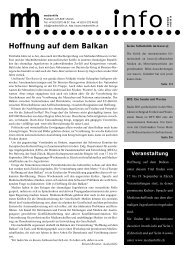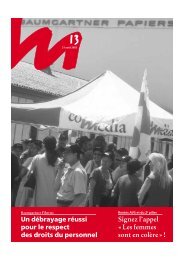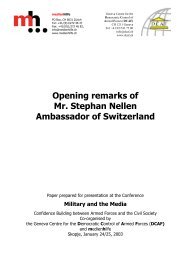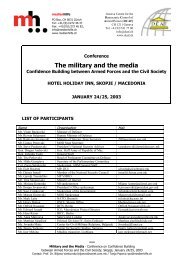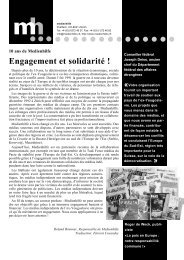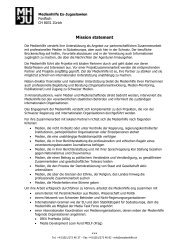The Impact of Media Concentration on Professional ... - OSCE
The Impact of Media Concentration on Professional ... - OSCE
The Impact of Media Concentration on Professional ... - OSCE
Create successful ePaper yourself
Turn your PDF publications into a flip-book with our unique Google optimized e-Paper software.
Newspaper chains were the logical result <str<strong>on</strong>g>of</str<strong>on</strong>g> such a highly c<strong>on</strong>centratedownership structure. Already since the 1970s, themajority <str<strong>on</strong>g>of</str<strong>on</strong>g> local newspapers have come to be owned byprovincial papers. This trend has l<strong>on</strong>g since reached regi<strong>on</strong>aland nati<strong>on</strong>al dailies as well, and has been accelerated by thestructural changes since the mid-1980s. Today, 26 plus newspaperchains are operating throughout the country.But Finnish publishers didn’t stop there. As so<strong>on</strong> as it waslegally possible, they diversified into other media sectors tobecome multimedia producers. <str<strong>on</strong>g>The</str<strong>on</strong>g> big groups moved into theliberalized televisi<strong>on</strong> and radio broadcasting market and/orexpanded into publishing magazines and books. <str<strong>on</strong>g>The</str<strong>on</strong>g>y realizedthe potential <str<strong>on</strong>g>of</str<strong>on</strong>g> the internet early <strong>on</strong>. With the excepti<strong>on</strong> <str<strong>on</strong>g>of</str<strong>on</strong>g>theme parks, shops and music the Finnish media giants todaycover all mass media products and services.Today, Finnish newspapers generate half <str<strong>on</strong>g>of</str<strong>on</strong>g> their revenuethrough subscripti<strong>on</strong>s and single sales at the news stands. <str<strong>on</strong>g>The</str<strong>on</strong>g>other half is generated through advertisement, down from adependency level <str<strong>on</strong>g>of</str<strong>on</strong>g> 73 per cent 25 years ago. It is widelyaccepted within the newspaper community that the advertisementindustry has little to no influence <strong>on</strong> the editorial line<str<strong>on</strong>g>of</str<strong>on</strong>g> Finnish newspapers. <str<strong>on</strong>g>The</str<strong>on</strong>g> <strong>on</strong>e hundred per cent result <strong>on</strong>the related questi<strong>on</strong> should, therefore, be accepted withoutmuch surprise.Of course, this rush into ownership c<strong>on</strong>centrati<strong>on</strong> andcross-ownership changed many things for Finnish journalism.Provincial newspapers, both in chain or independent ownership,have intensified their co-operati<strong>on</strong> by exchanging editorialmaterials, producing comm<strong>on</strong> supplements and pages forweekend issues, and sharing printing capacity. <str<strong>on</strong>g>The</str<strong>on</strong>g> main reas<strong>on</strong>for such co-operati<strong>on</strong> is to be found in the ec<strong>on</strong>omic c<strong>on</strong>cept<str<strong>on</strong>g>of</str<strong>on</strong>g> ec<strong>on</strong>omies <str<strong>on</strong>g>of</str<strong>on</strong>g> scale: by combining individually limitedCOUNTRY REPORTS – FINLAND 117



